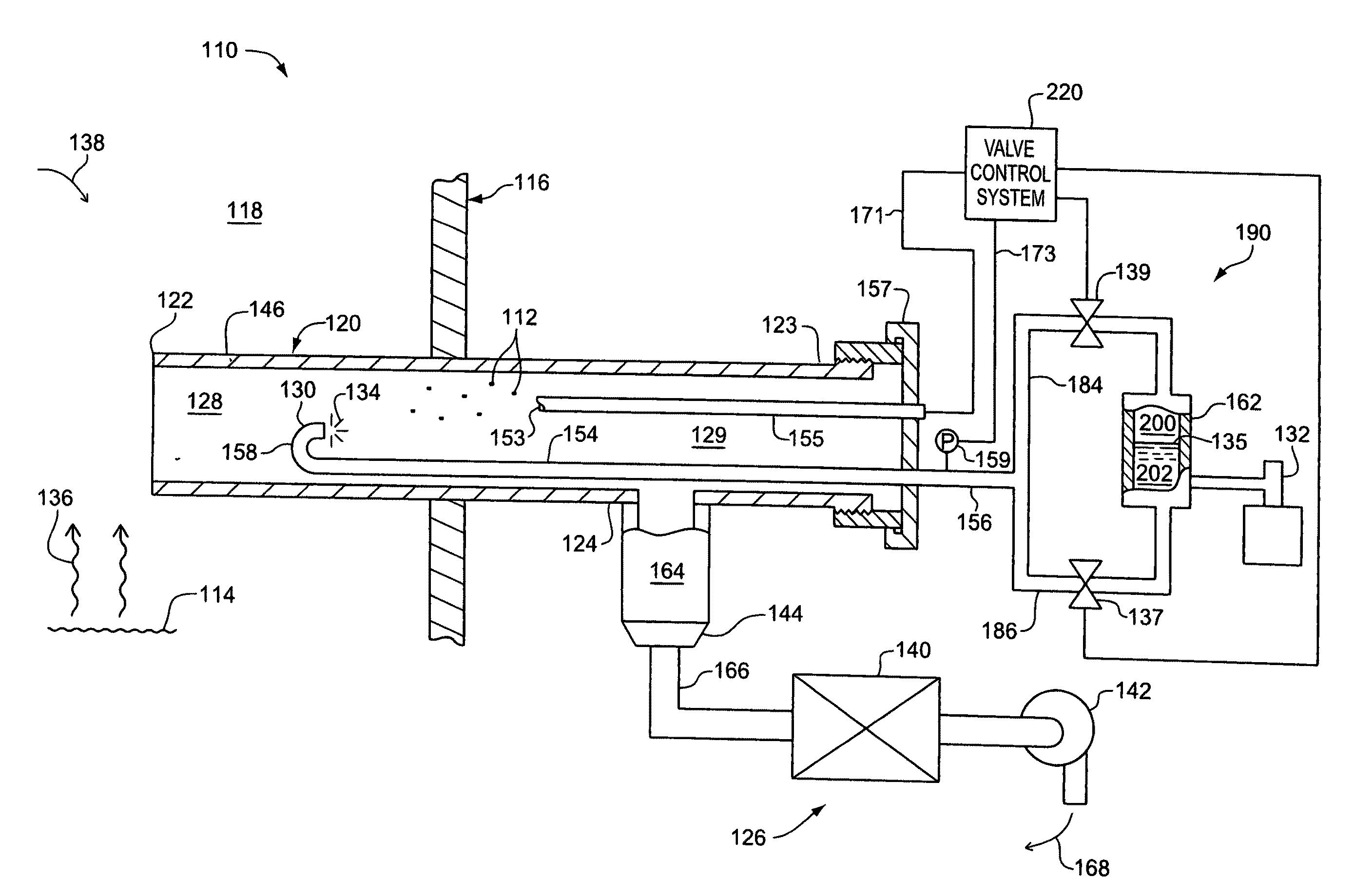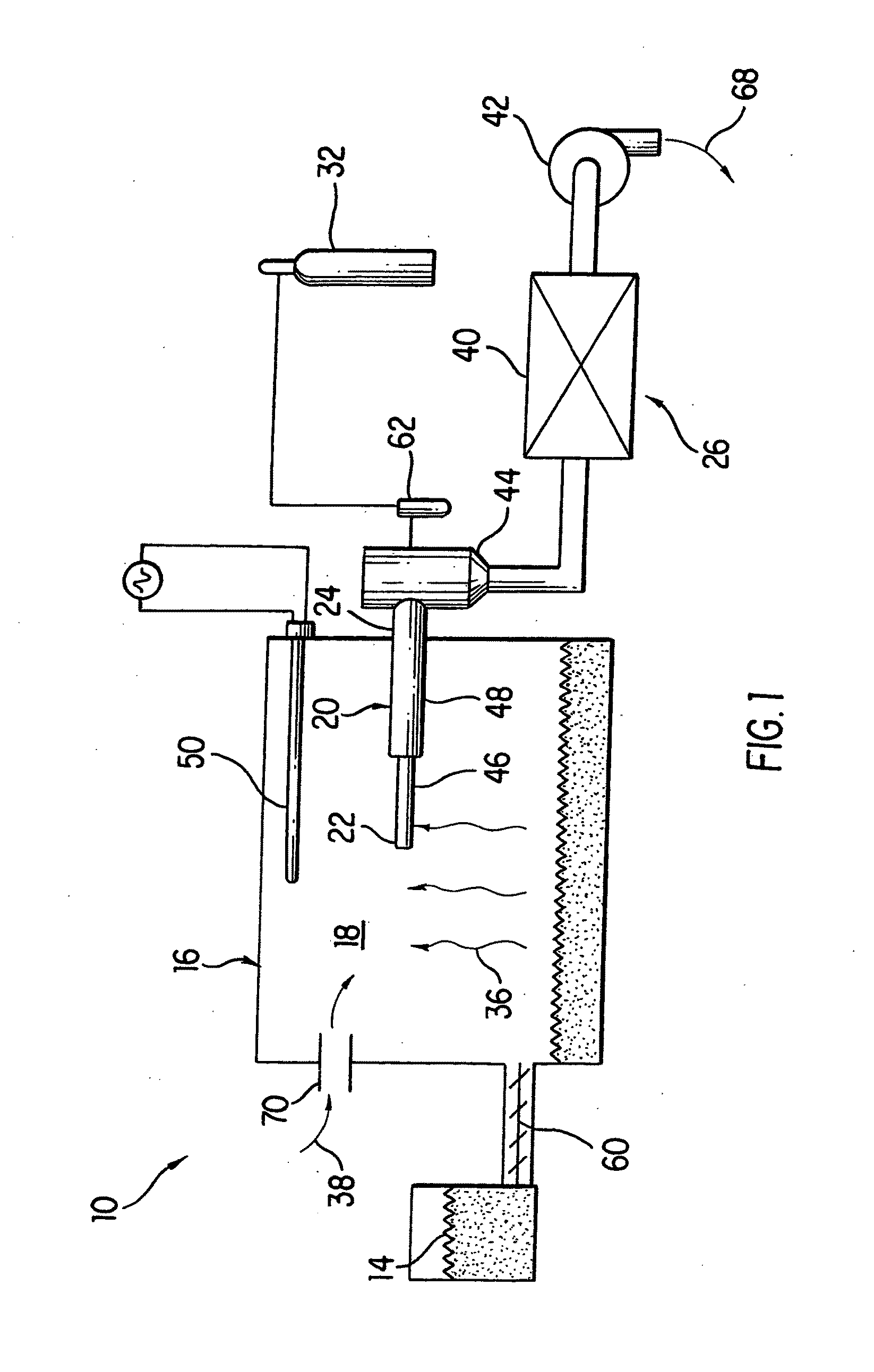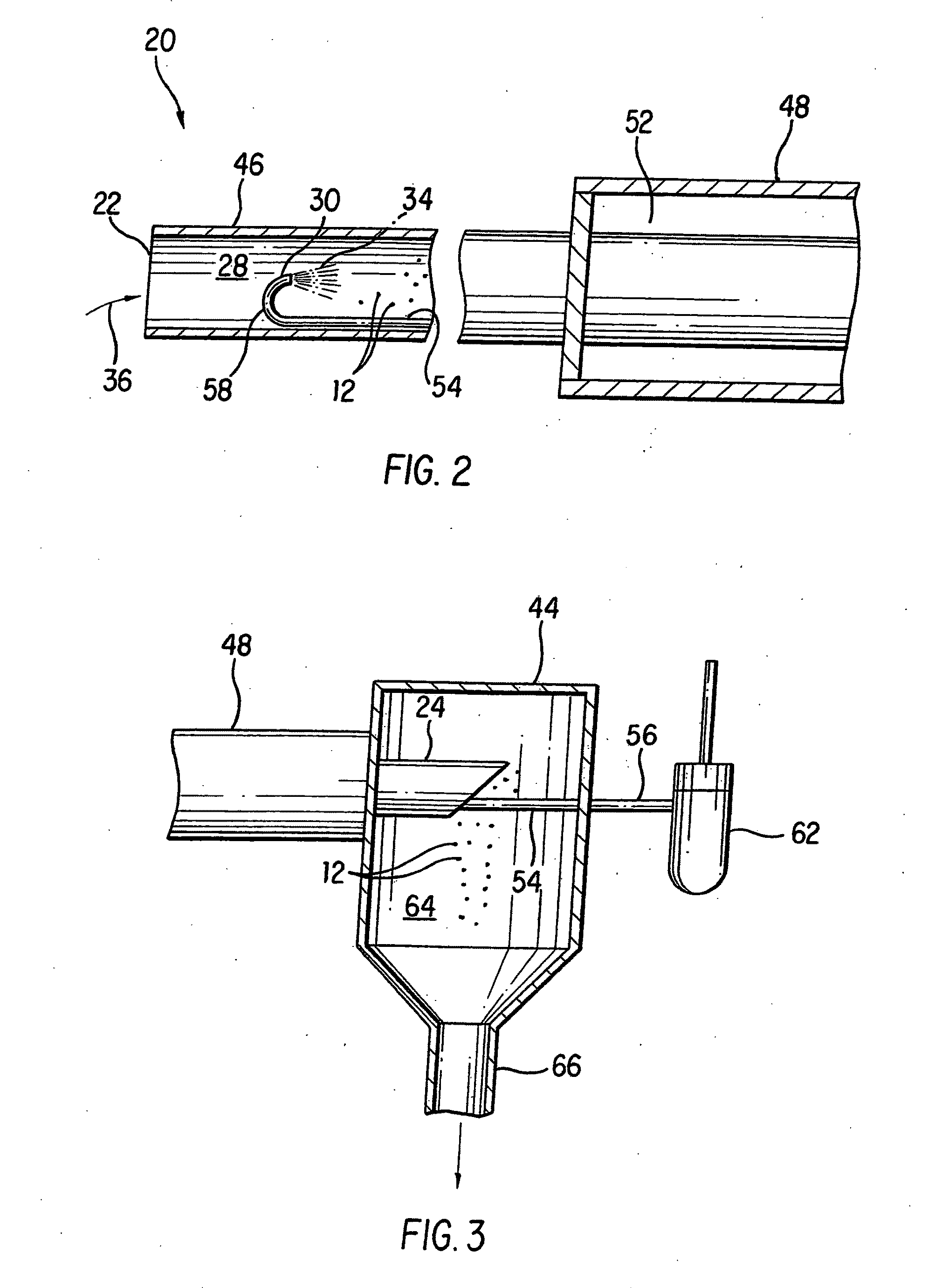Apparatus for Producing Nano-Particles of Molybdenum Oxide
a molybdenum oxide and molybdenum oxide technology, applied in the field of molybdenum oxide nanoparticle production apparatus, can solve the problems of limited use of nanoparticles, difficulty in producing nanoparticles of the desired size and composition on a commercial scale, e.g., by kilogram instead of gram, etc., and achieves low cost, convenient operation, and simple construction
- Summary
- Abstract
- Description
- Claims
- Application Information
AI Technical Summary
Benefits of technology
Problems solved by technology
Method used
Image
Examples
example 1
[0057]In this Example 1, the precursor material comprised a “technical grade” molybdic oxide (MoO3) powder having a typical size of about 24-260 microns. Such technical grade molybdic oxide powder is produced by the Climax Molybdenum Company of Fort Madison, Iowa, and is readily commercially available therefrom. The precursor material was provided to an electrically heated sublimation furnace of the type described above having a capacity to sublimate or vaporize approximately 284 kg / hr of precursor material. In this Example 1, the capacity of the sublimation furnace is considerably greater than was required to produce the amount nano-particle material 12 described in this Example. This is because the sublimation furnace is used in a conventional manner to produce a highly purified sublimed MoO3 material in accordance with a conventional process. The conventionally produced sublimed MoO3 material comprises particles that are much larger than the nano-sized particles produced accordin...
example 2
[0084]In this Example 2, the precursor material 114 comprised a “technical grade” molybdic oxide (MoO3) powder having a typical size of about 24-260 microns. Such technical grade molybdic oxide powder is produced by the Climax Molybdenum Company of Fort Madison, Iowa, and is readily commercially available therefrom. The precursor material 114 was provided to an electrically heated sublimation furnace (e.g., 116) of the type described above having a capacity to sublimate or vaporize approximately 284 kg / hr of precursor material. It should be noted that the capacity of the sublimation furnace is considerably greater than was required to produce the amount nano-particle material 112 described in this Example 2. This is because the sublimation furnace is used in a conventional manner to produce a highly purified sublimed MoO3 material in accordance with a conventional process. The conventionally produced sublimed MoO3 material comprises particles that are much larger than the nano-sized...
PUM
| Property | Measurement | Unit |
|---|---|---|
| spaced distance | aaaaa | aaaaa |
| sizes | aaaaa | aaaaa |
| sizes | aaaaa | aaaaa |
Abstract
Description
Claims
Application Information
 Login to View More
Login to View More - Generate Ideas
- Intellectual Property
- Life Sciences
- Materials
- Tech Scout
- Unparalleled Data Quality
- Higher Quality Content
- 60% Fewer Hallucinations
Browse by: Latest US Patents, China's latest patents, Technical Efficacy Thesaurus, Application Domain, Technology Topic, Popular Technical Reports.
© 2025 PatSnap. All rights reserved.Legal|Privacy policy|Modern Slavery Act Transparency Statement|Sitemap|About US| Contact US: help@patsnap.com



